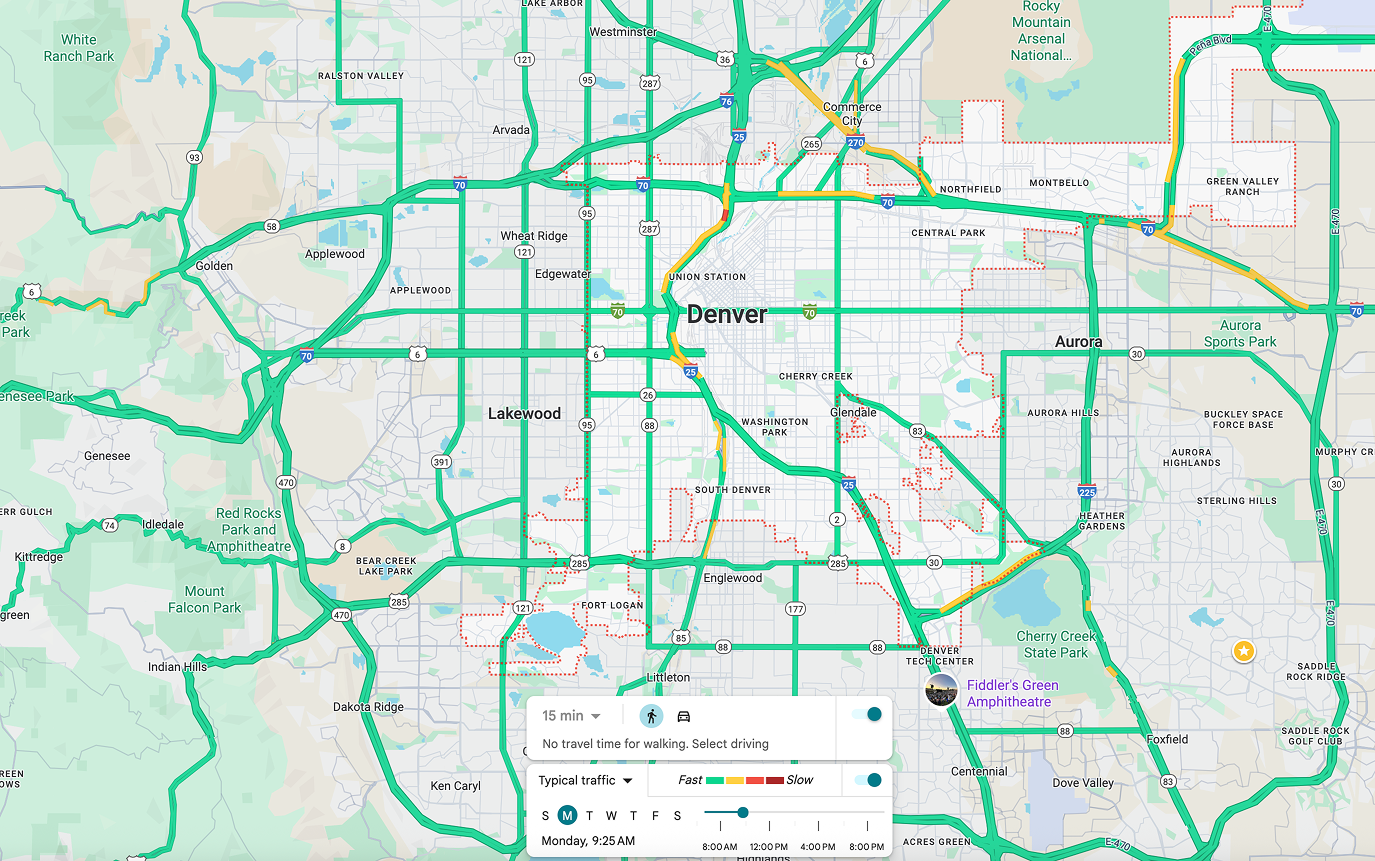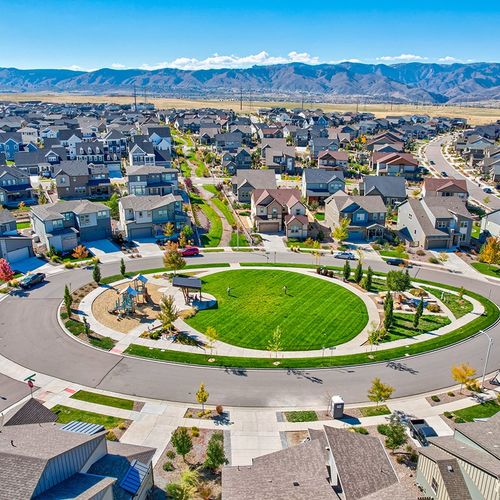TL;DR
Moving to Colorado can be a dream come true, but many out-of-state buyers make common, costly mistakes. This guide breaks down five crucial missteps, from misjudging commute times and focusing solely on Denver to misunderstanding market conditions, overlooking Colorado-specific costs, and rushing the home-buying process. Learn how to avoid these pitfalls for a successful and stress-free relocation.
---
Relocating to a new state is a massive undertaking, and when that state is as sought-after as Colorado, the stakes are even higher. Here at Living in Denver - The Mile High Property Brothers, we've helped hundreds of clients transition from places like California, Texas, Chicago, and Florida. Through these experiences, we've identified recurring missteps that out-of-state buyers frequently make when moving to Colorado. Our goal is to equip you with the insider knowledge to avoid these common and costly errors, ensuring your move to Denver, Colorado, is as smooth and successful as possible.
Let's dive into the top five mistakes and, more importantly, how to avoid them.
1. Misjudging Commute Times by Spot on the Map
One of the first and most common mistakes people make when moving to Colorado is judging a suburb solely by its location on a map. Many assume that the further a city appears from Denver, the longer the commute will be. This assumption often stems from experiences in other large, sprawling metros where a 10-mile trip can take over an hour. However, the Denver metro area, while spread out, has a unique highway system designed for efficiency.
"30 miles in Denver is not the same as 30 miles in the Bay Area or Chicago or any of these other places that you guys might be coming from."
The Reality of Denver Commutes:
Many of our major communities, including Castle Rock, Parker, Highlands Ranch, Aurora, Broomfield, and Thornton, were developed with highways like I-25 (north-south) and I-70 (east-west) in mind. This means you're often just 5 to 8 minutes from your neighborhood to a major highway, allowing for surprisingly quick travel times to downtown Denver or Denver International Airport (DIA).
Consider the client from the Bay Area who initially dismissed Castle Rock, seeing it as too far from downtown Denver (about 35 miles). Yet, a real-time drive during the middle of the day took only 30 minutes, and even with traffic, it's typically around 45 minutes (barring accidents). This opened their eyes to a whole new world of possibilities, offering the space, nature, and good schools they desired, which they couldn't find closer to the city center.
How to Avoid This Mistake:
- Utilize Mapping Tools: Always use Google Maps, Waze, or Apple Maps to pre-plan trips. Check commute times from potential suburbs to your office, schools, or the airport at different times of the day (e.g., 9 a.m., 2 p.m., 5 p.m.).
- Think Beyond Miles: Understand that proximity to highways significantly impacts travel time. A suburb further in miles might have a faster commute than one geographically closer but without direct highway access.
- Context is Key: While many commutes are efficient, long drives across the metro area can still be time-consuming. If your job is in Boulder, living in Castle Rock or Southeast Aurora might not be ideal, even with highway access.

2. Focusing Only on Denver: The "Denver Tunnel Vision"
When people first consider moving to Colorado, their Zillow searches often start and end with "Denver." This can quickly lead to sticker shock with $900,000 home prices, an abundance of older, historic homes, or school rankings that don't meet expectations. What many don't realize is that when locals say they live in "Denver," they often mean anywhere within a 30- to 40-minute radius of the city center – essentially, the entire Denver Metro Area.
For instance, Eli personally lives 40 minutes outside of Denver in Elizabeth, a rural city southeast of Denver, but still tells people he lives in "Denver" because that's how locals communicate. The truth is, the lifestyle you're likely seeking when moving to Colorado – the nature, scenery, activities, and quality of life – is often found in the surrounding suburbs and master-planned communities, not necessarily in the urban core of Denver itself.
Where to Find Your Lifestyle:
- Master-Planned Communities: If you're looking for family-friendly environments, new neighbors, and a strong sense of community, explore areas like Parker, Castle Rock, Highlands Ranch, Sterling Ranch, Broomfield, Westminster, or Southeast Aurora. These offer excellent amenities and maintain that Colorado feel. Want to learn more about specific neighborhoods? Check out Why People Are Moving to Denver’s Cory Merrill (Custom Home Tour Inside) for a deeper dive into a hidden gem.
- Mountain Town Vibe: For those prioritizing immediate access to hiking and mountain biking trails, consider Morrison, Golden, Boulder, the Ken Carl area (Westside Littleton), or even Sterling Ranch, which is less than 10 minutes from Roxborough State Park.
- New Builds: If a brand-new home is on your wish list, primarily look north (Broomfield, Erie, Thornton) or south (Castle Rock), and increasingly, further east (Aurora Highlands). New construction is less common on the west side.
How to Avoid This Mistake:
- Expand Your Search: Don't limit your online searches to just "Denver." Explore surrounding cities and suburbs.
- Compare Value: See what your budget gets you in different areas. A dollar in Golden (older homes, mountain proximity, historic vibe) will buy a different type of home and lifestyle than a dollar in Castle Rock (newer homes, bigger yards, views).
- Define Your Priorities: Understand what aspects of the Colorado lifestyle are most important to you (e.g., specific schools, mountain views, new construction, community amenities) and let that guide your area search.
3. Not Understanding Current Market Conditions
It's easy to make assumptions about the real estate market, especially when interest rates are higher and inventory is up, suggesting a buyer's market. While many homes do offer opportunities for under-asking offers or seller concessions (like buying down interest rates), it's a mistake to assume these conditions apply universally to every home.
The "X-Factor" Home:
Certain homes possess unique "X-factors" that make them highly desirable, regardless of broader market trends. These could include:
- Location: Backing up to open space with beautiful mountain views.
- Lot: Sitting at the end of a cul-de-sac with a large, amazing backyard.
- Condition: Gorgeously updated interiors, feeling like a model home designed by Chip and Joanna Gaines themselves.
When a home combines even one or two of these X-factors, it becomes a hot commodity. These homes can still receive multiple offers and sell quickly, even in a slower market. If you find a home that takes your breath away and checks all your boxes, don't assume you have weeks to think about it. Someone else is likely feeling the same way.
How to Avoid This Mistake:
Be Decisive: While we never rush clients, understanding that "X-factor" homes move fast means being prepared to make an offer quickly if you find the one*.
- Leverage Colorado's Buyer-Friendly Contracts: Once a home is under contract in Colorado, the process becomes very buyer-friendly. You have multiple checkpoints for due diligence:
* Inspection Period: 7-10 days to inspect and potentially terminate. * Insurance Review: Time to ensure homeowner's insurance is acceptable. * HOA Document Review: Opportunity to review HOA documents for any deal-breakers.
These checkpoints allow you to secure the home and then perform thorough due diligence. If it's not the right fit, you can often terminate and get your earnest money back, making the initial quick offer less risky.
4. Not Budgeting for Colorado-Specific Costs
Moving to a new state means more than just factoring in your mortgage payment. Colorado has specific costs that need to be part of your budget. Let's break them down:
- Property Taxes: Good news! Colorado boasts some of the lowest property taxes in the country. In established neighborhoods, you might see rates as low as 0.45% to 0.5%. For a million-dollar home, that's roughly $4,500-$5,000 annually. New build areas might be higher, around 1% to 1.2% (e.g., $10,000 for a million-dollar home), which is still a steal for many coming from states like Texas. To dive deeper into property taxes, watch Colorado Property Taxes: Too Good To Be True?.
- State Income Tax: Unlike Texas, Colorado has a flat state income tax. However, the overall tax savings from low property taxes often outweigh this.
Homeowners Insurance: While we don't typically have flood or extensive fire insurance (unless you're deep in mountain communities), hail is a significant factor. It's not if your home gets hit by hail, but when*. We recommend a fairly low deductible for your homeowners insurance. This can often be an advantage, as many roofs are replaced by insurance due to hail damage within a 5-10 year period, costing you only your deductible.
- HOA Payments: Most suburban communities in Colorado have HOAs, but they're generally not the "neighborhood watch" type that fines you for leaving a trash can out. These are typically massive, corporate-owned HOAs focused on maintaining aesthetic integrity – preventing things like RVs parked in streets or pink houses. Fees usually range from $50 to $200 a month, with most falling between $50-$75, covering things like sewer, trash, recycling, common area maintenance, pools, and clubhouses.
- Transportation: While not an immediate necessity, budgeting for an all-wheel drive (AWD) or four-wheel drive (4WD) vehicle within your first year or two is highly recommended. Subarus, SUVs with AWD/4WD, and trucks are very popular here for a reason – they're invaluable for navigating winter conditions and accessing mountain recreation.

5. Expecting to Buy a Home in a Weekend
The "fly in on Friday, buy by Sunday" trip is a real phenomenon, and while it can happen, it puts immense pressure on you, often leading to rushed decisions and unnecessary stress. We recommend a more efficient and stress-free multi-phase approach.
Our Recommended Home Buying Process:
- Digital Discovery Phase: This starts with a one-on-one 30-minute Zoom call with us. We'll discuss your priorities, budget, and lifestyle needs. We'll then use a map to pinpoint specific cities, communities, and neighborhoods that align with your vision. This virtual groundwork is crucial for narrowing down your search before you even set foot in Colorado.
- Exploratory Trip (Self-Exploration): We suggest dedicating one to two days on the front end of your trip for self-exploration. We'll help you game-plan which areas to drive through and even recommend centrally located hotels. A great tip for getting a feel for a community's demographics is to grab a coffee and people-watch at the local grocery store – a central hub for all residents. The goal here is elimination: figuring out what areas aren't your vibe.
- In-Person Tours (With Us): For the second half of your exploratory trip, we'll meet up in person and tour homes in the areas you've identified as favorites. We prioritize area first, then the home, so you don't fall in love with a house in a neighborhood you don't actually like.
- Virtual Tours & Hybrid Model: If your timeline for moving is a few months out, you can fly back home knowing your preferred areas. As your move date approaches, we can conduct live FaceTime tours and video walkthroughs, giving you our personal input on the home and its immediate surroundings (e.g., what's behind the backyard, neighbor's homes). This builds enough confidence for many clients to make an offer virtually.
- In-Person Inspection Period Visit: The hybrid model means you don't buy sight unseen. Once your offer is accepted and the home is under contract, you can fly back out during the inspection period to tour the home in person. If it's not the right fit, you can terminate, get your earnest money back, and ideally look at other options while you're still in town.
This deliberate, phased approach saves you stress, time, and ensures you make a well-informed decision without feeling rushed. It's about being quick and efficient with carefully planned trips.
We've helped hundreds of clients successfully navigate their move to Colorado by refining this system. By avoiding these five common mistakes, you'll be well on your way to finding your dream home and embracing the incredible Colorado lifestyle.
Frequently Asked Questions (FAQ)
Q: What are common mistakes when moving to Colorado?
A: Common mistakes include misjudging commute times based on map distance, focusing only on the city of Denver and overlooking the suburbs, making assumptions about real estate market conditions, not budgeting for Colorado-specific costs like hail insurance or HOAs, and trying to buy a home in a single weekend trip.
Q: Which Denver suburbs have good schools?
A: Many Denver suburbs are known for excellent schools and family-friendly amenities. Areas like Parker, Castle Rock, Highlands Ranch, Sterling Ranch, Broomfield, Westminster, and Southeast Aurora are popular choices for families looking for quality education and master-planned communities.
Q: How long is the commute from Castle Rock to Denver?
A: The commute from Castle Rock to downtown Denver is approximately 35 miles. While this might seem far on a map, efficient highway access (I-25) means it can take as little as 30 minutes during off-peak hours and typically around 45 minutes during peak traffic, barring any accidents. This makes Castle Rock a surprisingly convenient option for many.
Q: Is it better to live in Denver or the suburbs?
A: The "best" place to live depends on your lifestyle. Denver offers an urban experience, but many people moving to Colorado for its nature, scenery, activities, and quality of life find these aspects more readily available and affordable in the suburbs. Suburbs often provide newer homes, larger yards, better schools, and master-planned communities with amenities, while still offering mountain views and easy access to Denver.
Q: Where can I find new homes in the Denver area?
A: If you're looking for brand new homes, your primary search areas should be north of Denver (e.g., Broomfield, Erie, Thornton), south of Denver (e.g., Castle Rock), and further east (e.g., Aurora Highlands). New construction is less prevalent on the west side of the metro area.
---
Watch the Full Video
For more insights, watch the complete video: 5 Big Mistakes People Make Moving to Colorado
---
Making Your Move Easier
Moving forward does not have to be overwhelming. With the right guidance and support, you can navigate this journey smoothly. Eli Schmidt and Will Grimes are ready to help you every step of the way.
Here's how to get in touch:
📧 Email: [email protected]
📞 Phone: 720-419-0224
💻 YouTube: Living in Denver - The Mile High Property Brothers


